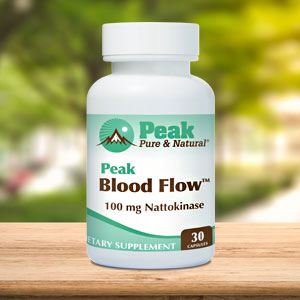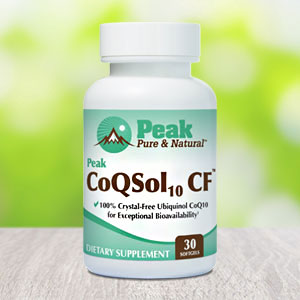Get Easy Health Digest™ in your inbox and don’t miss a thing when you subscribe today. Plus, get the free bonus report, Mother Nature’s Tips, Tricks and Remedies for Cholesterol, Blood Pressure & Blood Sugar as my way of saying welcome to the community!
Feed a cold, starve a fever (or leave it be for faster recovery)

My mother was ahead of her time.
She was never quick to reach for the medicine bottle when my sister or I were sick.
Instead, she sat with us, gave us warm tea or cold compresses to make us more comfortable, and had us tell her about our symptoms.
Only then did she decide if it was time for a doctor’s visit.
Mom also knew nothing about antibiotic-resistant infections, but she was never one to ask for an antibiotic unless the doctor offered one.
A fever wasn’t always cause for aspirin, either. Mom had this notion that a low-grade fever was better left alone than treated.
Decades later, research is proving her right…
Fever: A natural attack on pathogens
Believe it or not, having a fever is a good thing.
A fever is the regulated increase in body temperature that is part of a systemic reaction to infection. This reaction has evolved over thousands of years, not just in humans but in most animals.
Fever makes its appearance in the acute phase of an illness when symptoms first appear.
The heat of a fever improves the performance of immune cells. It also stresses the pathogens that are causing the illness.
The term “immune brinksmanship” describes how the body uses fever to help cure illnesses.
Essentially, the body induces harm to both itself and the disease-causing pathogen, gambling that it can endure those costs more than the pathogen can.
The problem with jumping to medicate a fever
Quite simply, having even a low-grade fever is uncomfortable. It causes chills, fatigue, headache and loss of appetite. No one wants those things to stick around for long, so we reach for the NSAIDs that will get rid of them.
But I tend to wait before reaching for the fever reducer. I want to see just how sick I really am. If I squash the fever down before it reaches its peak, I’ll be eliminating one of the only clues I have as to whether I’m seriously ill or just need to stay in bed for a while.
A recent study shows that even fish use this biological response to control disease…
Researchers found that a mild fever helped clear fish of infection in about seven days — half the time it took for fish the experimenters prevented from exerting a natural fever response. Fever also helped shut down inflammation and repair injured tissue.
The study’s lead author, immunologist Daniel Barreda, believes the research suggests we should not rush to bring down mild fever with medications. We may end up feeling better but, he adds, “… you’re also likely giving away some of the benefits of this natural response.”
Not letting fevers do their job poses problems for society at large as well. This has become particularly apparent during the COVID-19 pandemic, but the same could apply to influenza too.
Three public health problems stem from not letting fevers do their job:
- First, fevers are used to monitor health. If you’ve ever had your temperature taken before being allowed to enter a building, you know this. Masking high temperatures with medication makes this public health measure less effective.
- Second, reducing your fever will help you “feel” well, but you are probably still contagious and your infection could be worse than it appears.
- Third, when you get rid of a fever, you’re really getting rid of a protective mechanism your body uses against disease. This, too, can cause further spread of an infectious disease.
What to do instead
This is what I do when I’m feeling ill but don’t think it’s anything too serious:
I go to bed with some hot tea, water, warm blankets and a thermometer. I leave the ibuprofen in the medicine cabinet and monitor my temperature.
Within 24 hours, I usually see the highest temperature I’m likely to reach. If it’s remained below 100 degrees, I start taking ibuprofen if I really want relief from my headache, body aches and chills.
Or I sometimes just let it run its course, continuing to monitor my temperature.
The Mayo Clinic says that fevers above 102 degrees tend to cause discomfort and often require treatment. They suggest a fever reducer at that point.
But if an adult doesn’t feel that bad and wants to stick it out, they suggest that if the fever reaches 103 or higher, doesn’t respond to medication, or lasts longer than 3 days, you should call your doctor.
And regardless, you might want to chat with your trusted healthcare practitioner, especially if you have any existing conditions they’d be familiar with. They would also know what might be going around at the time, and help you decide if you need to be seen.
Editor’s note: Did you know that when you take your body from acid to alkaline you can boost your energy, lose weight, soothe digestion, avoid illness and achieve wellness? Click here to discover The Alkaline Secret to Ultimate Vitality and revive your life today!
Sources:
Mild fever helps clear infections faster, new study suggests Science Daily
Let fever do its job Evolution, Medicine, and Public Health














